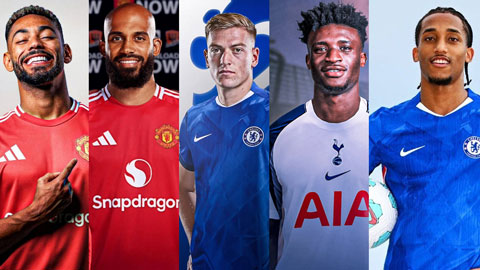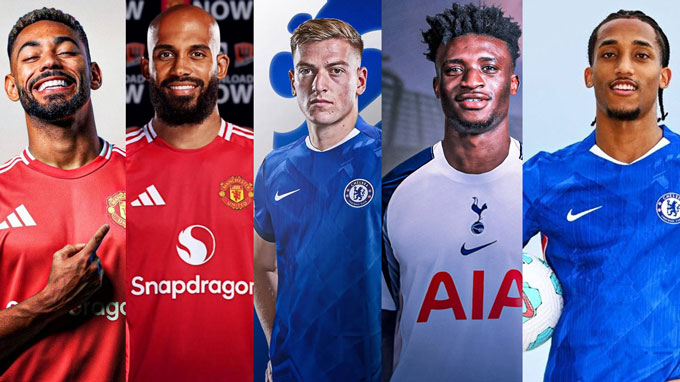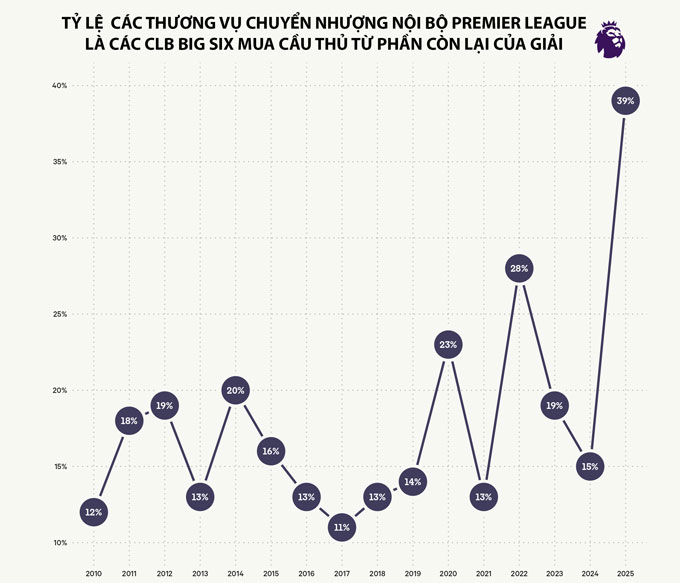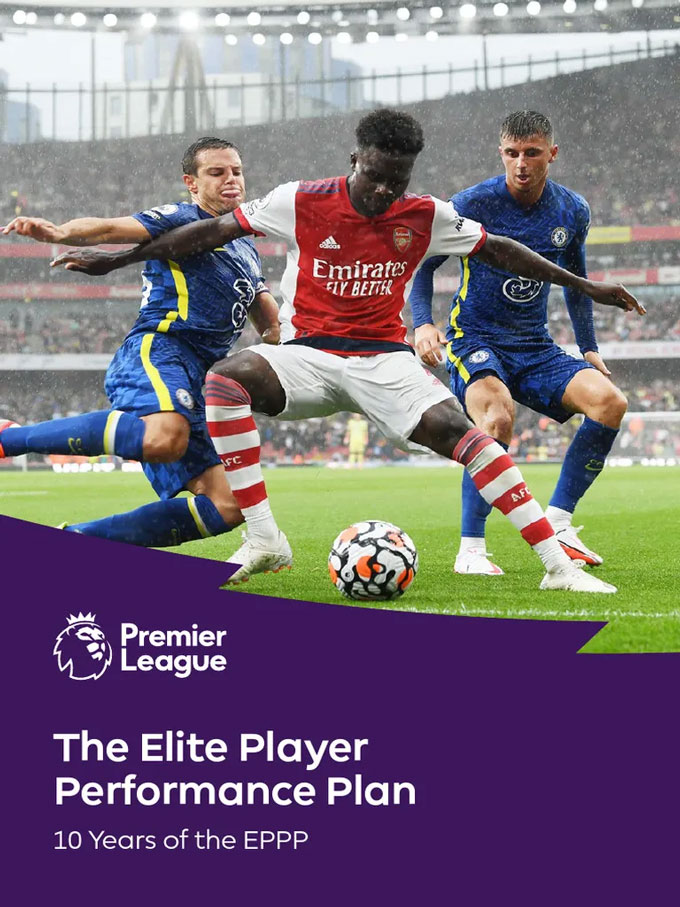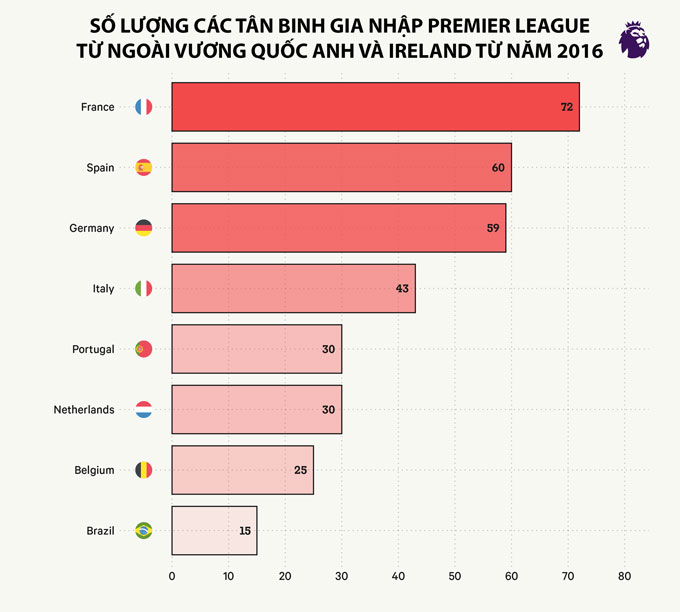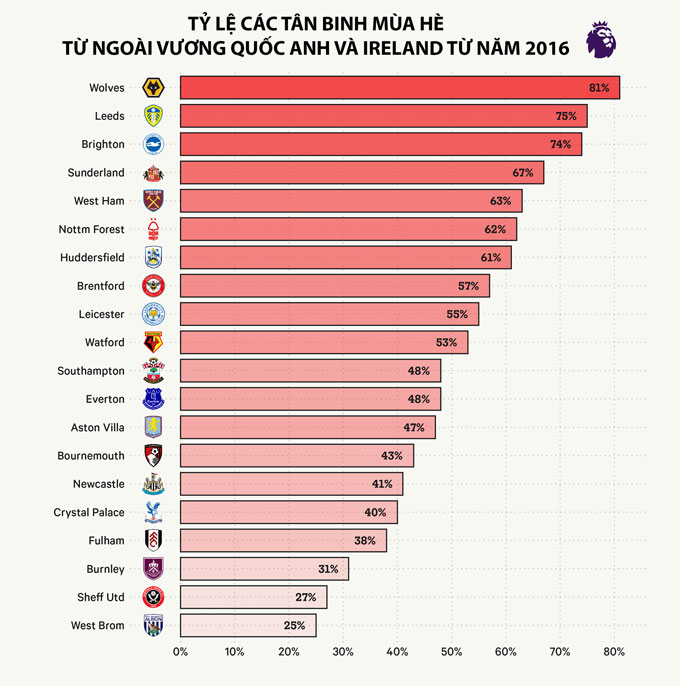This summer, the trend of the top 6 big teams of the Premier League likes to recruit the players of the rest of the tournament. 39% of the Premier League internal transfer is Big Six bought from the remaining teams, the highest rate since 2010. There are many reasons for this phenomenon.
A strange phenomenon
This summer, there were many players moving clubs in the English Premier League. However, the feeling that the Premier League internal deals are increasing are actually just an illusion. Up to now, such deals account for only 25% of the number of contracts to the Premier League (excluding loan) in the current transfer window, equal to the lowest rate in the last 5 summer.
However, that feeling can come from the stature of the contracts that have just taken place. Noni Madueke moved from Chelsea to Arsenal, Bryan Mbeumo and Matheus CuHa docked Man United from Brentford and Wolves, Newcastle recruited Anthony Elanga from Nottingham, Tottenham to have Mohammed Kudus from West Ham, and Chelsea added Jao Pedro (Brighton) and Liam Delap (IPSwich) into the squad.
The deals towards the traditional Big Six clubs of the Premier League always attract great attention. In addition to the above names, Milos Kerkez, Rayan Ait-Nouri and Christian Norgaard joined Liverpool, Man City and Arsenal respectively. This reinforces the judgment that the Rich Premier League clubs are “reaping” talents from smaller teams.
Although the overall number of internal Premier League is on average, most of them are the deals that the Big Six group buys players from the rest of the tournament.
Here, the Big Six group has been understood as the richest clubs since 2010 including Arsenal, Liverpool, Man United, Chelsea and Man City (after being taken over by Abu Dhabi United Group in 2008) and Tottenham (benefited from the Champions League from 2010).
This summer, 39% of the Premier League internal transfer is the Big Six club to buy players from the rest of the tournament, the highest rate since 2010. This is not merely because Big Six clubs buy more in general.
In the period from 2015 to 2019, Arsenal, Man United, Liverpool, Tottenham, Chelsea and Man City mainly focused on recruiting players from abroad, with the percentage of contracts from the remaining clubs in the Premier League during the summer transfer window never exceeded 15%.
Businesses such as Kevin de Bruyne, Mohamed Salah, Son Heung-Min, William Saliba or Jorginho have proven the value. At that time, young talents at European clubs were considered more attractive than the rest of the Premier League.
However, that has been changing in recent years. Big Six clubs are increasingly interested in recruiting players from the remaining teams in the tournament. This summer, 27% of the Big Six's contracts are from other Premier League clubs, the highest rate since 2010.
What is the reason?
So why is the Big Six group increasingly buying more players from the rest of the tournament? There are two main reasons.
The first was the introduction of the Elite Player Performance Plan (EPPP) in 2012 initiated by the Premier League, helping English football institutes train more quality talents. “We need a turning point,” Neil Saunders – Football Manager of the Premier League, who was the manager of the Academy program when the EPPP was born – shared with The Athletic in June.
“EPPP was born in the context that the British player and the trained players in our system did not reach the level of technical or tactics like European colleagues.”
The Liam Delap moving from Ipswich to Chelsea is a typical example, following the deals like Dominic Solanke from Bournemouth to Tottenham last summer, or Declan Rice from West Ham to Arsenal in 2023. The well -developed “homegrown” talents are flowing to big clubs.
This leads to the second factor: the terrible financial power of the Premier League. According to the latest annual financial statements of UEFA (European Club Finance and Investment Landscape), based on the 2023 audit report from 745 top clubs at 55 UEFA members, the total revenue of the Premier League (7.1 billion euros) is almost equal to the total revenue of La Liga and Bundesliga.
That is why promising players in Big Six clubs often stay in the Premier League, where the richest teams can offer a higher transfer fee and more attractive salary. The gap in television copyright is also part of this equation, with the latest domestic broadcast contract of the Premier League in the four -year period from the 2025/26 season with a total value of up to £ 6.7 billion.
TV revenue explosion since the 2016–2019 cycle with 5.1 billion pounds from domestic copyright compared to 3 billion pounds in the previous three -year cycle has promoted the spending ability of the tournament, while allowing teams outside Big Six to reach Europe and recruit names like Youi Tielemans (Monaco to Leicester City in 2019) or Amadou Onana (Lille to Everton in Everton in 2022).
Wise strategy
In three consecutive summers (2016, 2017 and 2018), it coincided with the stronger television rights cycle, the rate of recruiting players from outside the United Kingdom and Ireland of the Big Six clubs has increased to 51%, before falling to 46% of the 2019–2022 period, and then increased 51% in the 202225 cycle.
Since 2016, the teams outside the Big Six group have actively signed a contract with players from major tournaments in Europe. Leading is France (72 players to the Premier League), followed by Spain (60), Germany (59) and Italy (43).
Despite the discovery of talents from the second division that can bring many results, these clubs still prioritize signing contracts directly from top tournaments: Serie A, Bundesliga, La Liga and Ligue 1, accounting for 51% of their summer contracts since 2016.
For example, Wolves signed a contract to borrow Maheus Cunha from Atletico Madrid with the obligation to buy in the summer of 2023, before selling him to Man United in June 2025. Or Marc Cucurella moved from Getafe to Brighton in the summer of 2021 and was later acquired by Chelsea just a year later.
In addition, the two clubs with the lowest average age calculated according to the number of shopping contracts since 2016, Brighton and Brentford are the teams looking for young talents from many different markets, and then resell it to larger teams in the tournament.
Brighton's list is very long, besides Joao Pedro and Cucurella, there are Yves Bissouma, Moises Caicedo and Alexis Mac Allister. Brentford can be proud of deals like David Raya and Bryan Mbeumo, demonstrating the smart approach on the transfer market.
However, in terms of buying players from abroad in the summer (excluding loan) since 2016, Brighton has only ranked third with 74% from outside the United Kingdom and Ireland.
The two teams standing above are Leeds United (75%), the team has recruited 6 players from foreign markets this summer and Wolves (81%), who focused on the Portuguese market since playing in the Premier League in 2018.
Many players who join these clubs now often have the terms of the contract that allows Big Six teams to buy them at a predetermined price, whether it is a term of contract break or relegate terms.
Even when it was a high fee, the Big Six's financial strength still allowed them to meet this condition. Instead of looking for a similar and cheaper option in an unpopular market, the major Premier League clubs can easily spend “extra fees for playing in the Premier League” to get a player who proves himself in the tournament and adapted to life in the UK.
“You follow Maheus (Cunha) to play weekly and see him do these things before the opponents you will have to confront,” Man United's coach Ruben Amorim said last month. “That gives you more certainty when choosing a player.”
The fact that the UK academic system is producing better players, along with the ability to attract international talents of other Big Six clubs, has turned the Premier League to the ideal market for big guys in the tournament.
Summer 2025 is a brilliant harvest in the Premier League.

